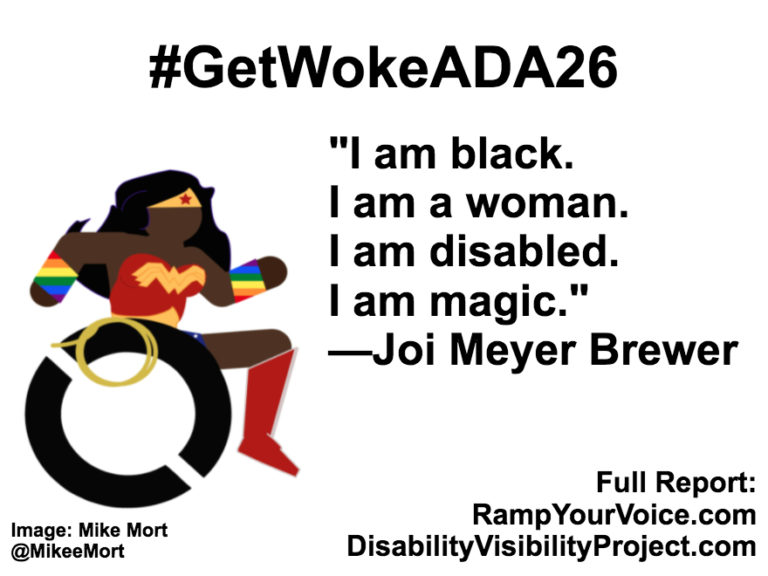The creators of Ramp Your Voice! and the Disability Visibility Project, Vilissa Thompson, LMSW and Alice Wong respectively, have collaborated to create #GetWokeADA26. The survey, created to celebrate the 26th anniversary of the Americans with Disabilities Act, highlighted the voices of disabled people of color to examine how the Americans with Disabilities Act has affected their lives.
“As disabled women of color, we believe the disability community needs to ‘get woke’ on race, racism, and intersectionality,” wrote Thompson. “The work of getting ‘woke’ can be hard, awkward, and uncomfortable, but this is something disabled people of color expect and deserve.”
Many who have participated have said how the Americans with Disabilities Act have helped them finish school, have better work experiences and a better quality of life overall. But other participants cited how the law negatively affects those with “invisible disabilities.”
The survey also highlighted other aspects of being a disabled person of color on the gender and sexual spectrums. Many of the overlapping issues facing disabled people of color are either ignored or not dealt with at the same time. To sum up their opinions, they felt that society wants them to either fit in one group or the other, and usually, the issues they face as people of color or as LGBTQ+ individuals aren’t discussed as much as they should because of an erroneous idea that discussing disability should be done with a naive colorblindness. In many ways, disabled people of color feel like they are being told “All Lives Matter” in their everyday lives.
There are also problems within certain demographics that exacerbate issues facing disabled people of color. One person wrote how their OCD, autism, and depression went undiagnosed because of a cultural attitude in black America to hide or ignore symptoms.
One way the angst over underrepresentation or lack of representation could be solved is if those in the media actually create characters and stories that focused on disabled people, especially disabled people of color, who are represented in the media even less than white disabled people. “Another major issue that the respondents frequently highlighted was the lack of diverse images of disability in the media,” wrote Wong. “One thing disability organizations can and should do is support the creation of media by disabled POC that reflects the full range of diversity in our community.”
“When you don’t see yourself in the media or in images produced by the disability community, you think you don’t count. White privilege is never knowing what that type of racialized erasure feels like, she wrote. “Disabled POC who speak out about this have been criticized and harassed online. Online communities and activism via social media such as #DisabilityTooWhite are creating spaces where these voices are heard and valued.”
Wong and Thompson provide these tips to readers who want to know how to better serve disabled people of color.
- Listen and engage with disabled POC.
- Don’t expect disabled POC to do the majority of the labor of educating you.
- Acknowledge white privilege and other forms of privilege throughout your organization’s work/activities.
- Recognize the pain that disabled POC experience as multiple marginalized people.
- Do not co-opt, appropriate the civil rights movement or compare it with the disability right movement. Just. Don’t.
- Build safe spaces for everyone to engage openly and honestly.
- Do not represent our views without us.
- Hire disabled POC as staff, consultants, and experts; and treat them as equals, not tokens.
- Realize diversity means more than a few disabled POC in a room!
- Examine your policies and practices for implicit bias.
- Build coalitions with communities of color and other social justice movements that are already doing intersectional work.
- Support the creation of diverse media by disabled POC.
You can read both parts of the report at Ramp Your Voice! and the Disability Visibility Project. You can also read Thompson and Wong‘s interviews with JUST ADD COLOR, as well as Thompson’s #RepresentYourStory article.
